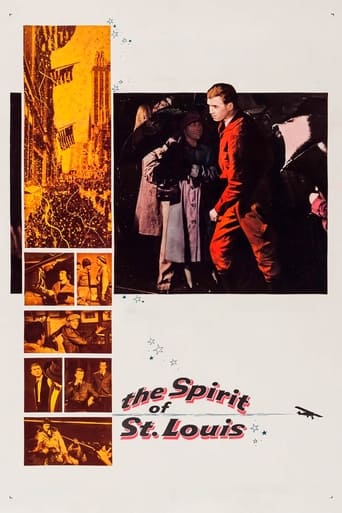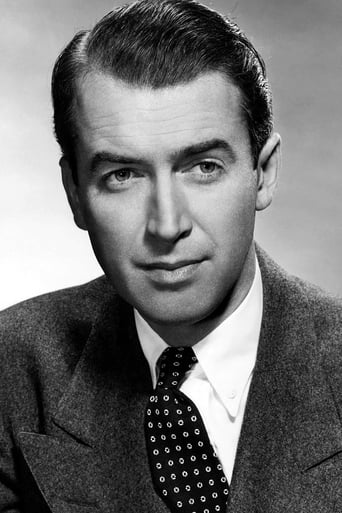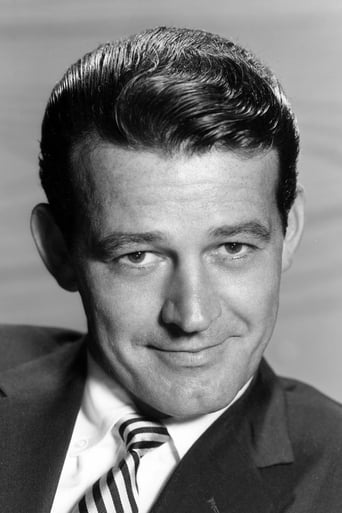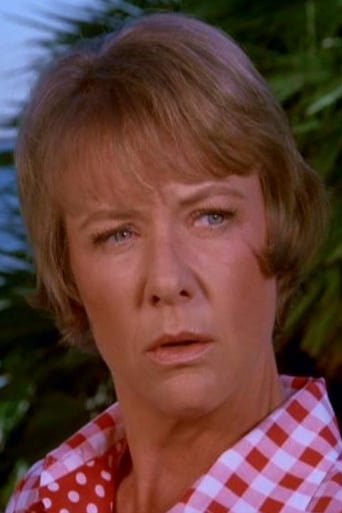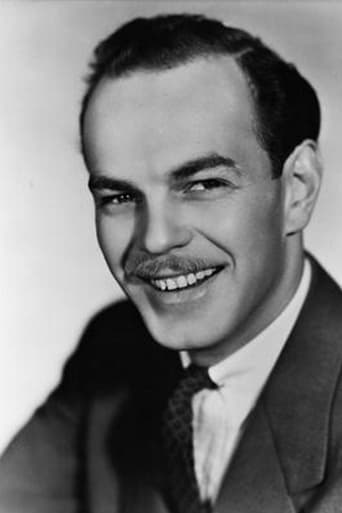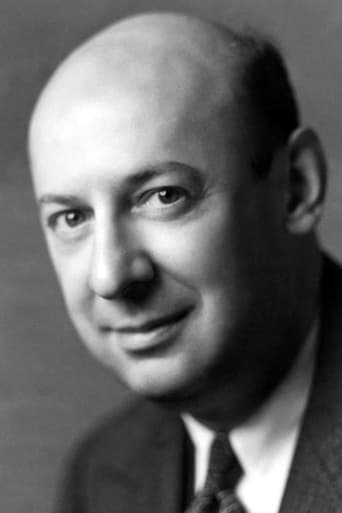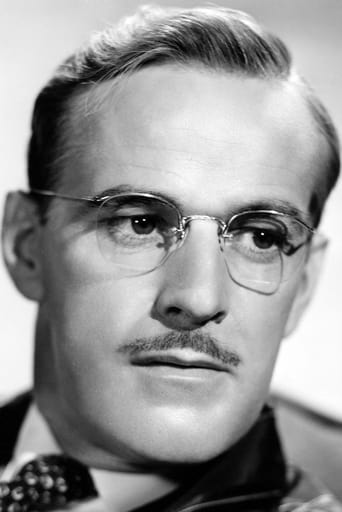ReaderKenka
Let's be realistic.
InformationRap
This is one of the few movies I've ever seen where the whole audience broke into spontaneous, loud applause a third of the way in.
Teddie Blake
The movie turns out to be a little better than the average. Starting from a romantic formula often seen in the cinema, it ends in the most predictable (and somewhat bland) way.
Darin
One of the film's great tricks is that, for a time, you think it will go down a rabbit hole of unrealistic glorification.
weezeralfalfa
The classic tale of the salient events up to and during the much celebrated first non-stop flight from the US to mainland Europe, by dark horse contender Charles Lindbergh: the youngest, least experienced, least well financed, and only solo pilot of a small group of contenders from both sides of the Atlantic. As mentioned, several teams had already died or wrecked their planes attempting to win the $25,000. prize for first success. The remaining contenders were: the favored Columbia team, the Richard Byrd team, and 'unlikely Lindy'. In May '27, the Bird tri-engine America was still being repaired from a crash during a test flight. The single engine Columbia had recently set a new non-stop endurance record of 55 hours: long enough to make it to Paris and beyond under reasonably favorable weather conditions(not brought out in the film). Two pilots were planned to soon fly it to Paris. As dramatized, Lindbergh had tried to buy this plane some months before, as everyone agreed it had the best chance for a single engine plane, which Lindbergh insisted on. But, the owner wanted to try to win the honor for himself, so Lindbergh had to look for a company willing to make a smaller, cheaper, version, and eventually found such.What wasn't brought out in the film is that all 3 of these planes had a recently improved radial engine: the Wright J-5, and all 3 would make a successful flight from near NYC to France or Germany within a few weeks of each other! Thus, the real 'hero' of this incremental aviation milestone should be recognized as the developers of the J-5 engine! The fact that Lindbergh happened to accomplish this feat a few weeks before the others was a quirk of fate: hence 'Lucky Lindy'. The Columbia was quite ready to challenge Lindbergh, but squabbling between the pilots and owner about how to divide up the monetary reward should they win led to the cancellation of their planned simultaneous take off with Lindbergh! This drama could have been included in the film in place of some of the section detailing the construction of Lindbergh's plane, the episode flying with the priest and some of the filler portions of the flight. Also, the ending could have generously included a shot of newspaper headlines of Chamberlin's subsequent solo pilot flight of the Columbia to Germany, with passenger, and Byrd's subsequent flight to France, demonstrating that a tri-engine plane, with a 4 man crew, using the same engine, could make the flight. These forgotten flights demonstrated that Lindbergh's highly modified, bare bones plane and single occupant was not necessary to accomplish his feat, thus providing further hope that transatlantic flights carrying cargo and passengers would be forthcoming. But, as Byrd correctly predicted, it would be many years before technological and other advances would allow regularly scheduled transatlantic passenger flights in planes(as opposed to Zeppelins). In fact, regular land to land US-Europe flight schedules didn't begin until the conclusion of WW II! Although briefly lionized almost as much as Lindberg, both in Germany and the US, neither of the two occupants of The Columbia proved to have an ounce of Lindberg's perceived charisma, hence were soon forgotten by the media and public. Chamberlin would soon pilot the first successful takeoff from a ship, even without the aid of a catapult. This film didn't do very well at the box office, but has subsequently been elevated as a classic. Perhaps the salient features of the story were still too well known by the public. Perhaps the film was too long and had some rather boring segments. Perhaps many Americans were offended by Lindbergh's subsequent close association with Nazi-Germany and anti-Jewish sentiments. Perhaps many thought that Jimmy Stewart, at nearly twice Lindbergh's age, was too old to convincingly portray his youthful enthusiasm. Lindbergh preferred Anthony Perkins for the role. I thought Stewart was fine. I have already made some suggestions on how the film's interest could have been improved, primarily by toning down the hero worship, cutting out the least interesting or relevant segments, and substituting some scenes devoted to his worthy competitors.The hazards of Lindbergh's brief career as an air mail pilot, just prior to his quest for this fame is dramatized in the first portion. Several episodes of his prior experiences as a serious or stunt pilot are dramatized later as flashbacks during his epic flight. This was an excellent idea, with some comedic elements added. Although not much emphasized, Lindbergh credited his training as an army corp pilot as being the most important experience in preparing him for his epic flight. In the film, his experience as a mail pilot in bad weather is portrayed as being most important.The film dramatizes some of Lindbergh's key problems getting aloft and during the flight: the muddy take off strip after days of rain, just clearing the telephone wires and trees, icing of his wings and carburetor, periodic nearly falling asleep, and balancing the depletion of his 5 gas tanks. It fails to mention the importance of his periodic reductions in engine RPM setting with the gradual depletion of his fuel, thus extending his range. Also, since his plane didn't have a variable propeller pitch pilot control, it was critical to set the pitch just low enough to get airborne with his weight, but high enough to allow reasonably efficient utilization of fuel during cruising.
blanche-2
Jimmy Stewart is Charles Lindbergh in "The Spirit of St. Louis," a 1957 film directed by Billy Wilder and based on Lindbergh's book about his transatlantic flight.The film deals with little else but Lindbergh's career up to and including his monumental flight from Roosevelt Field to Le Bourget in France in 33 hours back in 1927. We see Lindbergh as a mail pilot, then attempting to raise funds to buy a plane, though a plane ended up being built by a small aircraft company. And then the flight itself - and Wilder somehow makes it suspenseful and interesting. He really captures the pilot's complete isolation with no copilot or radio, talking to himself (Stewart provides the narration), sleep-deprived, with only the sound of the plane for company, falling asleep at the wheel, and finally, unsure where he was and using map topography to figure it out. It's an amazing story. During the flight sequence, there are flashbacks to earlier points in Lindbergh's life.The Spirit of St. Louis is replicated, and once seen, it's very hard to believe it got out of Roosevelt Field. Lightweight, Lindbergh made sure it carried only the absolute essentials and refused to even bring a parachute or radio because of the extra weight.Today, for me anyway, James Stewart is just James Stewart, one of the great film stars and actors. I'm blissfully unaware of his age most of the time, and I was in this film as well. For me, he was tall, lanky Lindbergh, determined to succeed and very likable. I realize that John Kerr was offered the role first, but if he had taken it, the film would have flopped initially, as it did starring Stewart, due to the huge budget, but I don't believe it would hold up as well as it does today.Heroes are very rarely discussed as human beings, and many of their words and actions are taken out of context and out of the era. Lindbergh was ahead of his time in his environmental and aeronautical pursuits and very much of his time in some of his political beliefs. And as we now know, fidelity wasn't one of his strong points. Reading an excellent, well-researched biography like Scott Berg wrote is preferable to making snap judgments. Hindsight is easy. Complicated men have complicated lives. You don't achieve what Lindbergh did in the Spirit of St. Louis by being ordinary. Wilder does an excellent job in showing his crowning achievement, and in evoking the excitement people felt at the time.
pacificboy
I gave this a five only for Stewart's characteristically fine performance; the film itself deserves about two, I guess, just for keeping the camera steady. Movies about a single character's solitary endeavor need to have a hook to keep the audience's interest, and this movie has more than a bait & tackle shop. Whether it's talking to a fly who's hitched a ride or chatting to himself, Stewart's okay in the moment. But the film shoehorns in one needless flashback to Lindbergh's early life after another, almost none of which are interesting in and of themselves. Put it this way: If the flashbacks were placed chronologically at the beginning of the movie, the audience would be asleep before Lucky Lindy took off for France. The film's first hour suffers as it is (it takes about that long for our hero to begin his landmark journey). Thrill as Lindbergh haggles with an old man for his first plane! Witness the provocative fundraising scene! Forget it. There are better ways to learn about Charles Lindbergh than this dull, factually questionable biopic, and better films to see by both Stewart or director Billy Wilder.
DKosty123
On this day of James Stewarts Birthday, I revisited this movie. After watching this, I have to admit it is still an excellent film. Whenever aviation history is taught, this should be required viewing. There are 2 major reasons for this.Billy Wilder's script sticks with the story here. There are pleasant little flashbacks but every one of them are built into making the main story stronger. This script and story get perfect treatment and Wilder proves how great a writer he was. This is not an easy thing with this script. It could have been too long, too heavy handed, too overboard.James Stewart proves how talented he is. He carries this entire over 2 hour film. Yes, there is a support cast, but in this case Stewart does such a great job that it is hard to imagine anyone else carrying the film like he does. This is one of Stewarts great performances. It is so good you can actually believe he is Lindbergh for over 2 Hours.A very fitting Birthday film indeed for Stewart, his candles are all lit on the cake for this movie.
